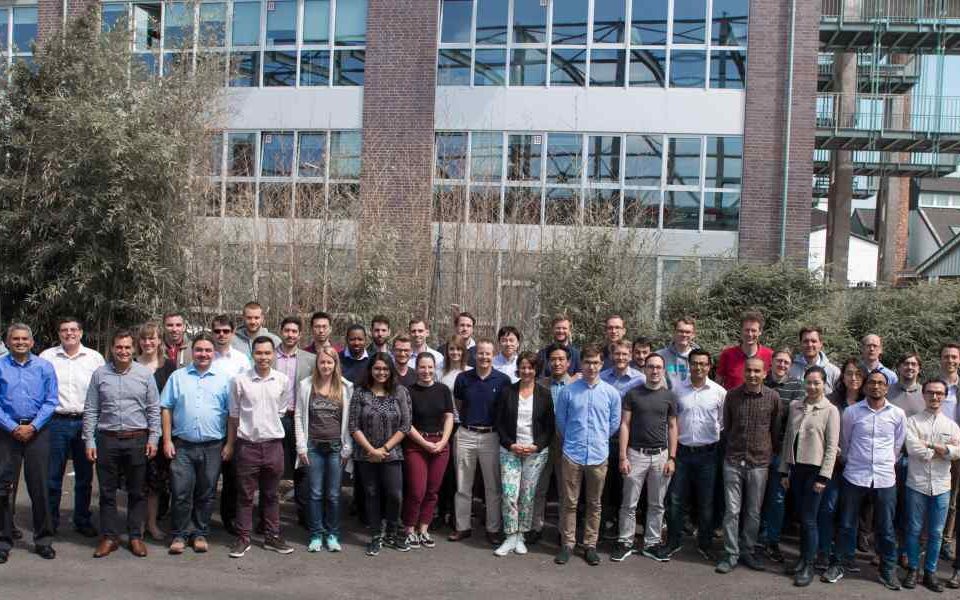Silexica raises $18 million to advance and improve software programming changes in autonomous cars

To enable advanced driver-assistance systems and autonomous driving, today’s cars are becoming supercomputers on wheels. Based on high-resolution sensor data, intelligent decisions can be made in real-time. But car makers are facing the problem to implement this demanding software on low-power on-board computers. This is where Silexica, the developer of the SLX programming tools, comes into play.
Today, Silexica announced the completion of its $18 million Series B round of financing to advance software development solutions for autonomous driving. The latest round was led by EQT Ventures Fund (EQT Ventures) with participation from existing investors Merus Capital, Paua Ventures, Seed Fonds Aachen and DSA Invest. The company’s $8 million Series A was completed in November 2016 and was led by Merus Capital and Paua Ventures with participation from existing investors Seed Fonds Aachen and DSA Invest.
The complexity of software design is evolving rapidly with embedded supercomputers required to deliver trillions of actions every second for systems such as autonomous cars. Due to the shift to the computing everywhere era with increased connectivity and rapid data processing, complex new computing architectures are becoming increasingly difficult to program manually.
The Cologne, Germany-based Silexica was founded in 2014 by Johannes Emigholz, Maximilian Odendahl, and Weihua Sheng. The company provides automated programming solutions that enable electronic device manufactures to effectively deploy multicore processors. Advanced multicore hardware platforms are nowadays finding their irreversible way into every electronic device manufactured. These platforms are currently programmed manually, which is difficult, time-consuming and error-prone. With the number of processor cores continuously rising, the software design complexity continues to explode.
Silexica´s tools expose available parallelism and compute an optimal mapping and scheduling for multicore platforms. You can choose a fully automatic optimization, or interact with the tools through a GUI in order to guide software mapping by expert knowledge. The final output is a set of parallel C codes for the individual cores of the target hardware. These C codes are forwarded to the native C compilers of the target hardware, such as RISCs, DSPs, VLIWs, or ASIPs.

Silexica´s reference flow is fully modular and can be adapted. The standard C frontend can be replaced by other language frontends like C++ or Java. Algorithmic block diagrams can be converted into Silexica´s internal process network representation CPN. The backend can generate other parallel output formats than C, for instance pthreads, OpenCL, or SystemC. Last but not least, variations of the target multicore hardware can be explored for better performance, reduced costs, or lower power consumption.
Silexica’s award-winning multicore compiler includes proprietary technology to analyze applications, identify bottlenecks and estimate performance, enabling development teams to automatically partition legacy code, automate software distribution across multicore platforms and co-design software/hardware of next generation products.
With headquarters in Germany and offices in the US and Japan, Silexica has partnered with global customers across many rapidly transforming industries including automotive, wireless and aerospace. Silexica provides software development solutions that enable technology companies to take intelligent products such as autonomous cars from concept to deployment. The SLX programming tools help developers implement software to run efficiently on embedded supercomputers by offering deep understanding of how software behaves on the system.
Silexica has been developing the SLX programming tools since its launch in 2014 to analyze how software runs on these new heterogeneous multicore processors and provide deep system-level understanding for developers. Alternative approaches such as spreadsheet-based calculations are no longer capable of managing this new level of hardware complexity.
Silexica has expanded its presence with industry leading software and hardware experts. It has offices in Germany, the USA and Japan. Customers include Tier 1 automotive suppliers as well as leading OEMs in 5G, and Aerospace & Defense. For example, SLX has already helped Denso to automate workflows and migrate software to automotive multicore platforms and partners with Fujitsu on 4G/5G base-station projects.
Maximilian Odendahl, CEO of Silexica said: “We created SLX to support software professionals facing the biggest challenge in the industry – programming heterogeneous supercomputers. SLX is truly adding value to customers in delivering performance improvements and system insights on some of the most advanced computers being created. This funding round will enable us to strengthen existing and upcoming SLX tools and solutions. In addition, it will see us develop an industry first, vendor-neutral, multi-application Simulation Platform to help OEMs and all members of the supply chain optimize and integrate software provided for complex systems such as autonomous vehicles.”
EQT Ventures brings a network of leading industry experts and connections within the automation industry that, along with the investment, will continue to help Silexica grow and deliver solutions for the accelerating multicore development problem.
Ted Persson, Design Partner and investment advisor to EQT Ventures who will be joining Silexica’s Board, said: “In their quest to solve one of the largest challenges of the post-PC era, we believe Maximilian, Johannes and the rest of the team can steer Silexica into becoming one of the most important technology companies of this decade.”




